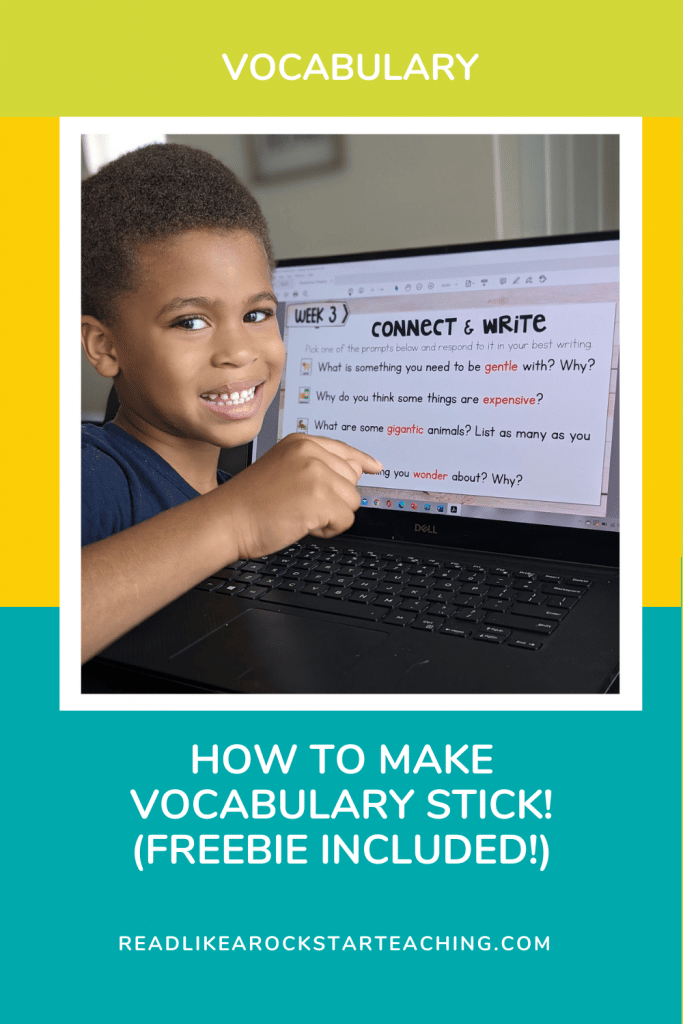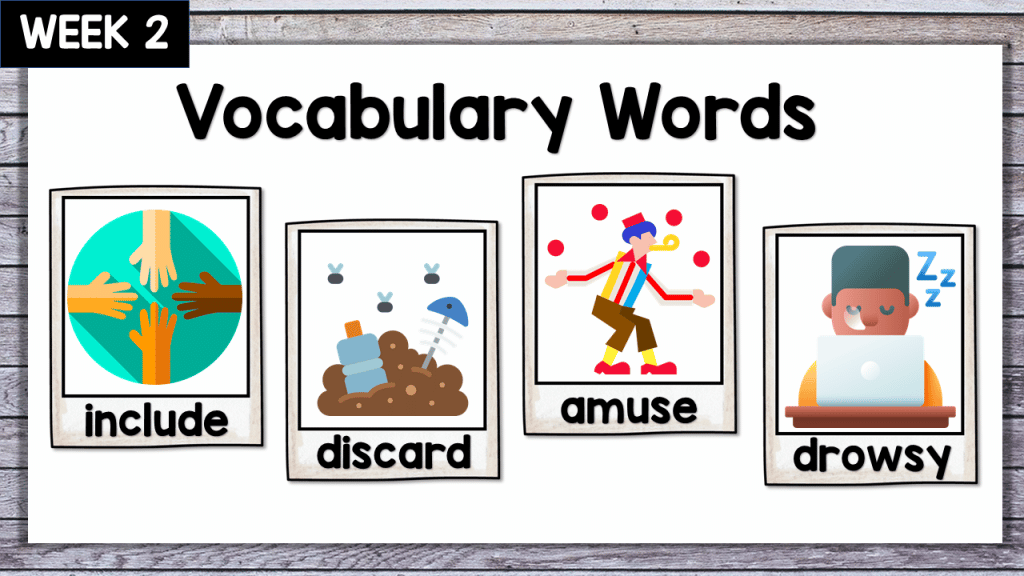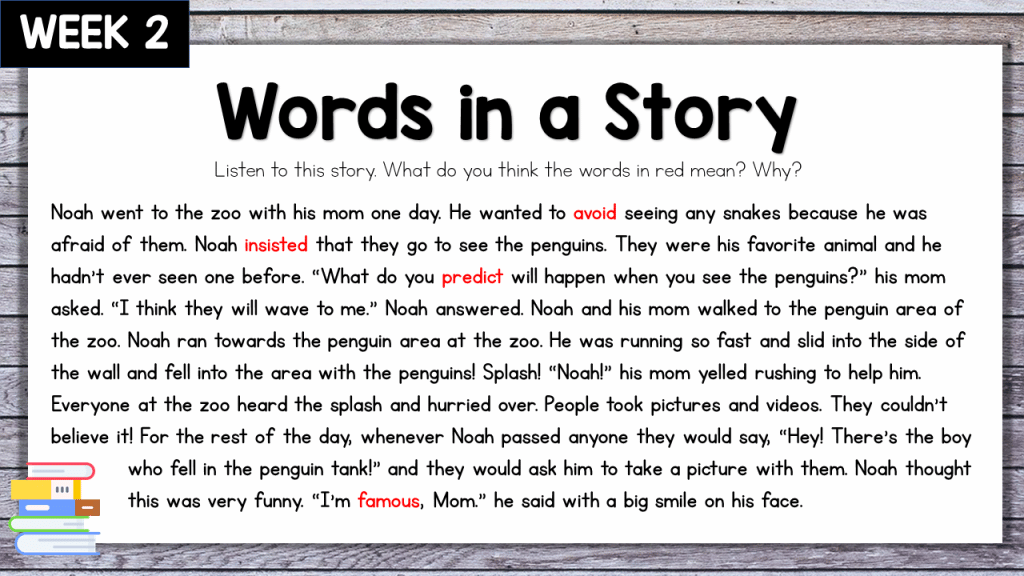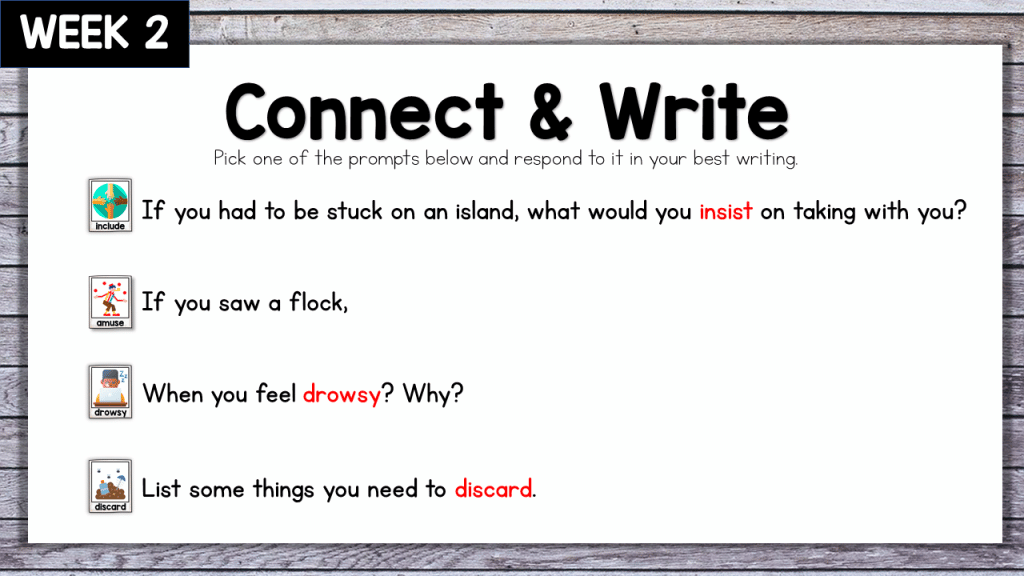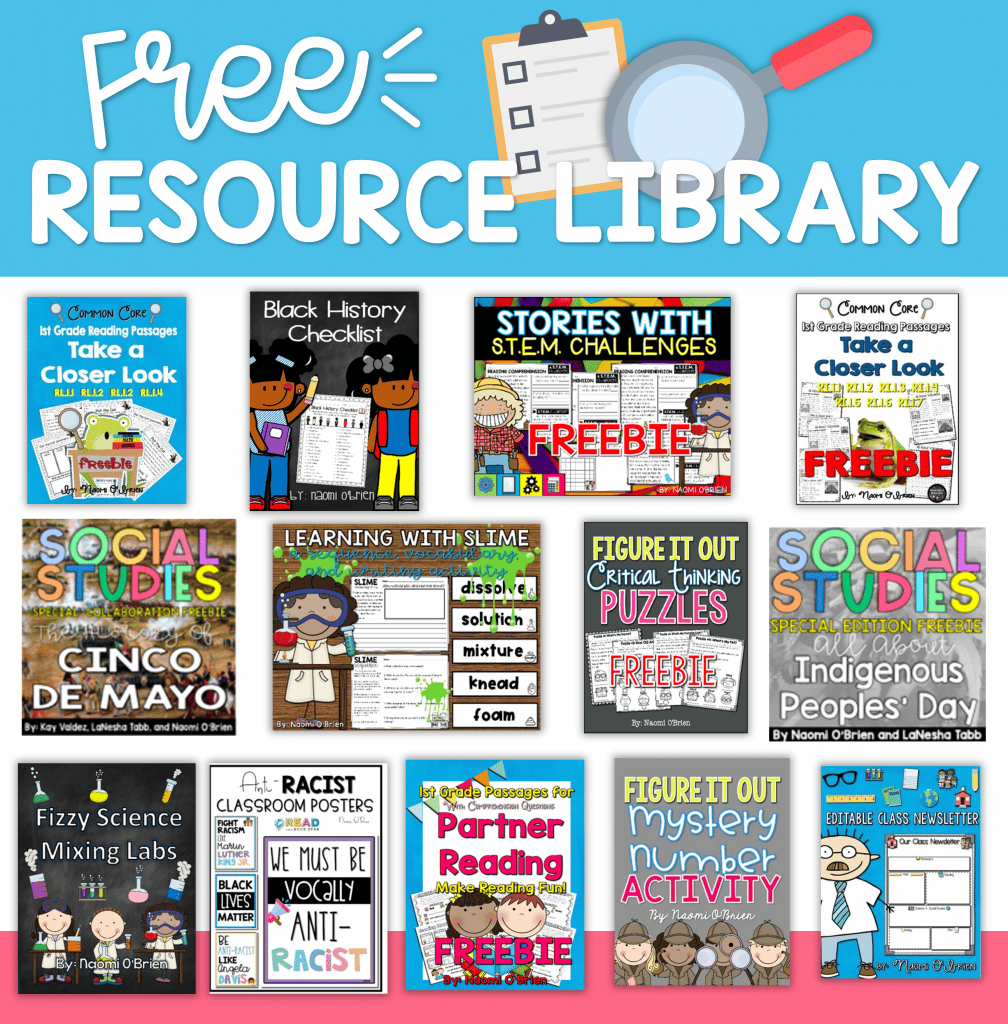Have you ever tried teaching kids vocabulary words and noticed that they just aren’t remembering them? I noticed this trend with my students and created different ways to engage with the words daily. I soon noticed they were remembering and USING their new words!
When I was taught how to teach kids vocabulary, I was told to just preview it in a story or assign it with a list of spelling words. If you’ve done this as well, then I know that you know students will learn these for the week (barely) and then these words will never been seen or heard from again.
If you have your own list of words and you’re just needing a way to make them stick, keep reading to see if the daily format I used can work for you too! In my class vocabulary instruction was just 10 minutes of less a day.
 My son did a great job remembering and using the vocabulary words I explicitly taught him. We did this list a few weeks ago and he still shrieks every time he hears my husband or I say one of these words, hears it on a television show, or uses it authentically himself!
My son did a great job remembering and using the vocabulary words I explicitly taught him. We did this list a few weeks ago and he still shrieks every time he hears my husband or I say one of these words, hears it on a television show, or uses it authentically himself!
What’s my vocabulary secret?
Day 1: Introduce Pictures to make a connection and use the words in context.
Day 2: Fill in the blank sentence activity
Day 3: Allow students to make their own connections.
Day 4: Students will illustrate word meanings
Day 5: Students will answer prompts using the words.
And each of these exercises are so quick and easy. I did these exercises whole group. There were a lot of turn and talks and independent processing that occurred during this time.
I’ll explain in more detail below:
On Day 1: Introduce the pictures. Tell students the new words for the week and ask if anyone knows what the words mean. Read the students the words in a story and give them the chance to guess what each word means. After the story, read them the definitions. Consider printing the vocabulary words page out and posting the weekly words in a place everyone can see and reference.
Day 2: Show the pictures again. Ask students if anyone remembers what the words mean. Review the definitions. Try to come up with a motion or action to remember each word. Read students the fill in the blank sentences and see if they can put the right words in the blanks. Show students how you can plug in different words and check to see if they make sense. Fill in the words and then read each sentence with the right word all together. Ask students what the sentences mean. See if someone can create their own sentence.
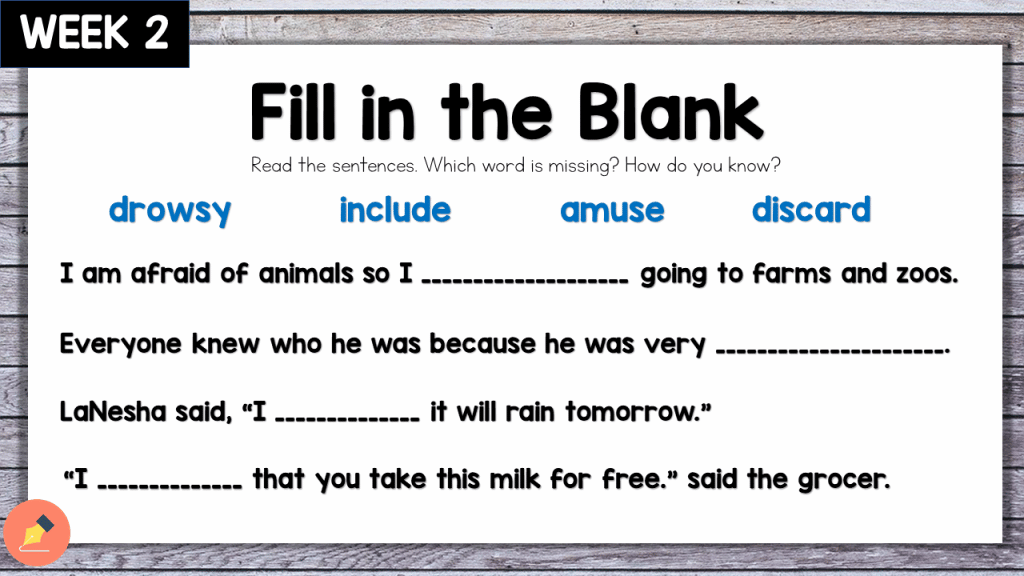
Day 3: Show the pictures again. Ask students if anyone remembers what the words mean. Review the definitions. Review any motions or actions from the previous day. Show students the Choose the Right Word slide. See if they can choose the best word to go with the picture you point to. Even if the answer seems so obvious. Allow students to justify their reasoning. They may find that more than one word fits if they really think about how to represent each word! (Higher order thinking!) For example, for a picture of a plane, someone might say that explore fits because you can use a plane to explore a new place. Someone else might say special because going on a trip is special. Someone could also say curious applies, because they are curious about where the plane is going!
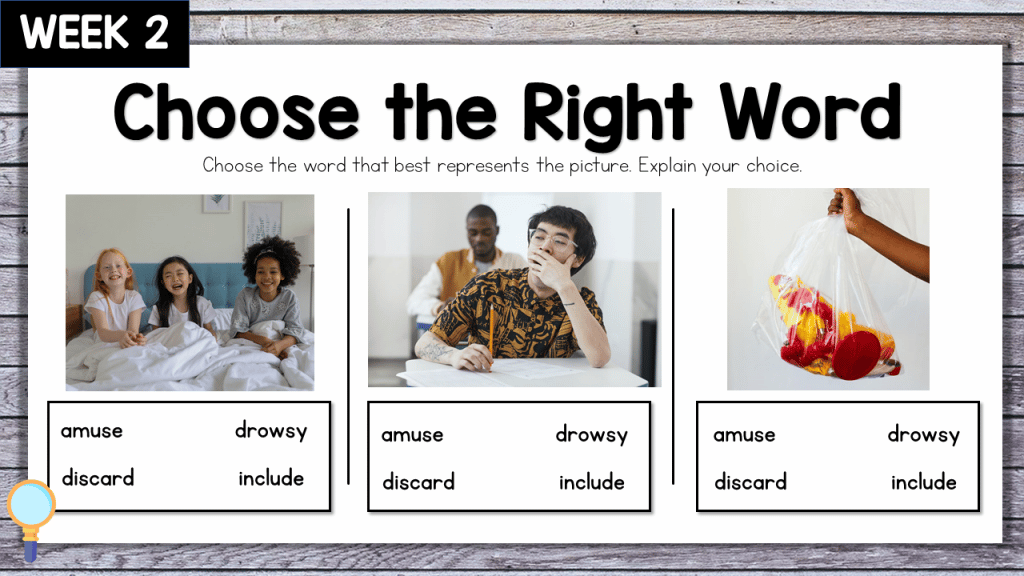
Day 4: Show the pictures again. Ask students if anyone remembers what the words mean. Review the definitions. Review any motions or actions from the previous day. Give students dry erase boards or a paper divided into four parts. Display and read the words and ask students to make their own illustrations to show their understanding of each word and make their own connections. Allow students to share their drawings with partners or even with the whole class.
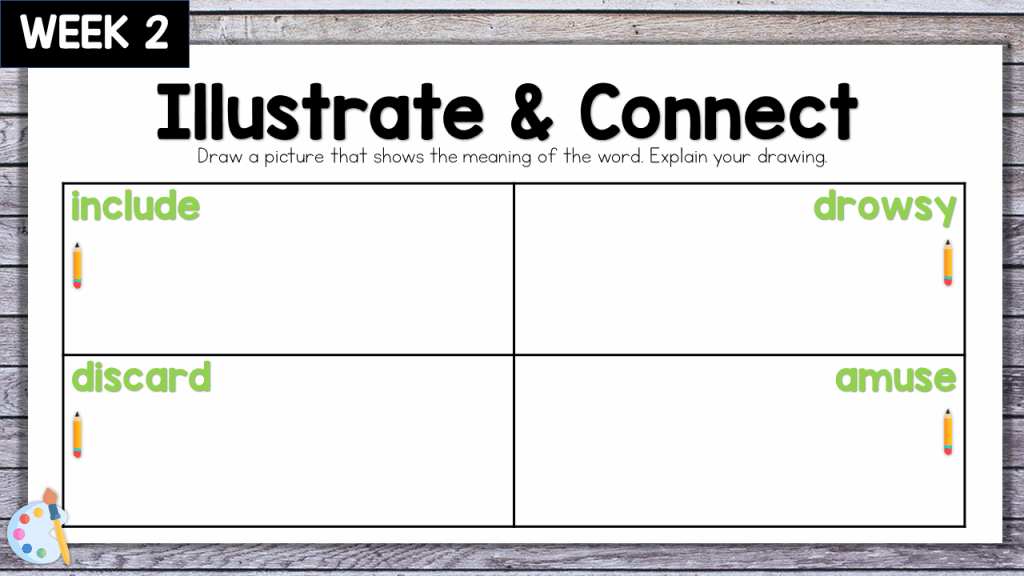

Day 5: Show the pictures again. Ask students if anyone remembers what the words mean. Review the definitions. Review any motions or actions from the previous day. By now, your students should have an understanding of each word. Read them each of the writing prompts and allow them to choose one prompt to answer. Allow students to share their writing with partners or even with the whole class.
With my first grade class and son, I had them answer the questions orally. We only had 10 minutes each day so discussing instead of writing worked best for us!
*For any students that are struggling with this, work with them in a small group while the other students work independently. Pick one prompt, review the definition, and plan with students how to answer the question. Write with them and help them use the word in their writing.
*For students that master the words quickly, challenge them to make their own sentences, poems, or stories using the words and invite them to share with their peers. Challenge them to create a game that will teach their peers who still need help.
Find the bundle and individual sets by clicking the image below!
Have fun teaching! I hope this was helpful!

